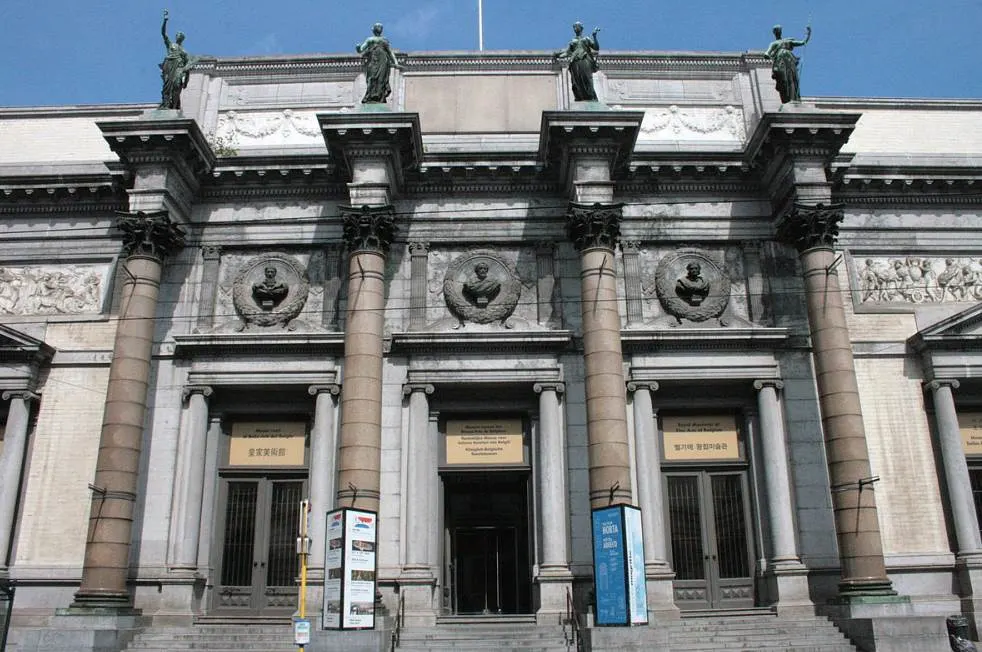Very few artists in history were as politically involved as Jacques-Louis David (1748-1825). He was a supporter of the French Revolution in the late 18th century.
He got connections to some of the most important people of the Revolution. This culminated in his adoration of Napoleon Bonaparte and his exile to Brussels after his idol’s final fall.
He was directly involved in the radicalization of the Revolution during the 1790s. One of his close friends was assassinated in 1793, and he painted his version of the event shortly after.
In this article, you’ll discover some of the most interesting facts about The Death of Marat by Jacques-Louis David, one of David’s most famous paintings.
1. It was completed the year that Marat was assassinated
Jacques-Louis David was born into a prosperous French family in 1748. Although he lost his father at the age of 9 in a duel, he managed to study and fully focus on his art as a teenager.
Initially trained by Rococo artists, he didn’t pursue the frivolous taste of the Rococo era but rather embraced Neoclassical painting.
He studied at the Royal Academy and his fierce nature was apparent when he went on a hunger strike after losing the Grand Prix of Rome twice. He did manage to win in 1774, though.
This radical element in his character stayed with him forever and it translated into his support for the French Revolution. This important event in European history started at a time when he was already a renowned French artist.
He completed The Death of Marat in 1793, just a few months after Marat’s assassination on July 13, 1793.

2. It depicts the moment shortly after Marat was stabbed by a female Girondin

Jean-Paul Marat (24 May 1743 – 13 July 1793) was a French scientist and political activist. He played a major role in the radicalization of the French Revolution by producing pamphlets that agitated the people.
He became a leader of the Montagnards, a radical political group during the Revolution. Thie nickname is a reference to their position on the benches of the top rows of the National Convention.
As a member of the Committee of General Security, he also oversaw the bloody Reign of Terror, a period during the revolution when everybody who opposed the Revolutionaries was executed by Guillotine.
David was also a member of this committee and even voted in favor of executing King Louis XVI and his wife Marie Antoinette.
He was stabbed to death by a woman named Charlotte Corday (1768-1793) while he was taking a medicinal bath to soothe the skin condition that he was suffering from.
Corday was a Girondin and a political opponent of Marat. She was arrested and executed just 4 days later.

3. The French painter might have been inspired by two Italian artists
David was certainly influenced by the works of some of the most famous Italian artists in history. The way in which Marat hangs out of the bathtub resembles Christ in Michelangelo’s Pietà.
The French artist was also a great fan of Caravaggio (1571-1610), the troubled artist of the Baroque era who revolutionized the use of chiaroscuro in paintings.
How Christ’s arm is hanging in Caravaggio’s painting “The Entombment of Christ” (1603-1604) bears a striking resemblance to David’s work.

4. A copy of the newspaper Marat was reading still survives today
Marat was directly involved in the Fall of the Girondins on June 2, 1793. He was doomed to play just a minor role in the subsequent event because of his worsening skin condition.
He continued to work from home, though, but Robespierre and his allies largely ignored his letters as they didn’t need him anymore to accomplish their goals.

The Girondins were a political faction during the early years of the French Revolution and Charlotte Corday sympathized with them.
She blamed Marat for their demise and managed to enter his apartment. His wife Simone reluctantly let her enter the room where he was lying in the bathtub. 15 minutes later, she pierced a kitchen knife through his heart.
During the event, Marat was correcting a version of his newspaper “L’Ami du Peuple.” This paper, drenched in his blood, has been preserved at the Bibliothèque Nationale in Paris.

5. The artist included a paper held by Marat which references his martyrdom
David included a note in Marat’s hand that is considered to be a fictional expression of what might have been the final words of Corday before she took action.
The note reads:
Il suffit que je sois bien malheureuse pour avoir droit a votre bienveillance.
This translates to: “Given that I am unhappy, I have a right to your help.”
This further emphasizes the fact that David aimed to depict Marat as a martyr of the Revolution. Just like the depictions of Jesus Christ, his body and face are glowing.

6. The painting was highly influential among artists of the modern age
The painting and its perceived martyrdom of Jean-Paul Marat instantly became a tool of propaganda during the Reign of Terror.
After the Fall of Robespierre, the main instigator of the bloody events between 1793 and 1794, the painting lost its significance and David eventually focused on establishing a relationship with Napoleon.
David’s painting and the event of Marat’s assassination became popular again in the early 20th century when artists like Pablo Picasso and Edvard Munch produced their own versions.
Especially the Expressionist painting by Edvard Munch, one of two versions that the artist produced, is a remarkable depiction of the Death of Marat. It can be admired at the Munch Museum in Oslo.

7. How big is The Death of Marat by Jacques-Louis David?
The murder of Jean-Paul Marat took place in a relatively small room in the man’s apartment in Paris. This didn’t really allow David to produce a monumental painting.
The Death of Marat by Jacques-Louis David is a medium-sized oil on canvas painting with dimensions of 162 × 128 centimeters (64 × 50 inches).

8. Where is the painting located today?
It remains unclear what happened to the painting following the events of the mid-1790s. It’s assumed that it was hidden somewhere in France by one of David’s pupils.
Following the Fall of Napoleon, Jacques-Louis David moved to Brussels and lived the final years of his life in the capital city of modern-day Belgium.
Today, the painting can be admired at the Royal Museums of Fine Arts of Belgium in Brussels. multiple copies were made and at least one is part of the collection of the Louvre in Paris.

